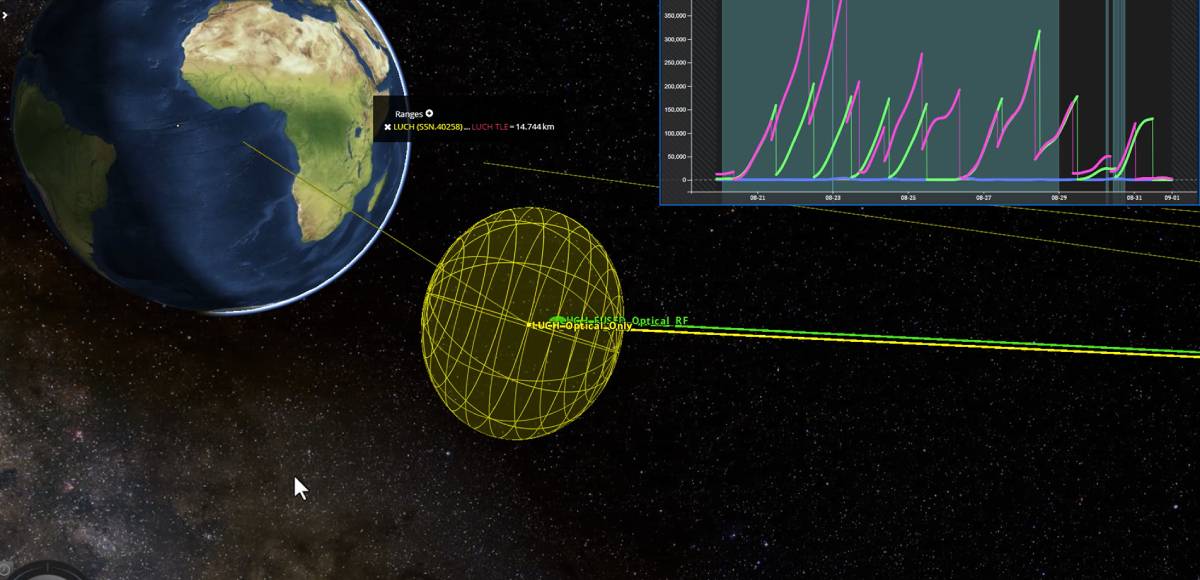
The Department of Defense (DoD) often expresses challenges when it comes to data interoperability. Just this June, in an effort to find resolution to this trending issue, U.S. Space Command (SPACECOM) commander Gen. Stephen Whiting announced a data fusion pilot program to improve command and control capabilities within space domain awareness (SDA).
While the agency has modernized its hardware, Gen. Whiting explained, some of the software technology dates back to the 1980s. With new software, however, SPACECOM could integrate artificial intelligence and machine learning (AI/ML) capabilities on fused data for improved decision making.
In the commercial world, such capabilities already exist.
Types of SDA Data
Data fusion is the process of merging different data sets. For SDA, this could mean better understanding of the evolving threats in space by combining data sets from collection tools such as electro-optical sensors, radar and RF signals.
These different phenomenologies, usually offered independently by specialized providers, each have their own strengths and limitations. Optical telescopes, for example, are cost-effective and good at understanding the angle from earth to the satellite based on certain reference points. However, they struggle in cases of bad weather, cloud congestion, direct sunlight and humidity.
Radar is generally effective in all weather conditions, day or night, but has difficulty distinguishing between objects of similar size and shape. Radars also transmit high power RF but are expensive and are therefore sparsely deployed.
RF sensors offer continuous observations throughout 24-hour cycles unaffected by atmospheric or environmental conditions, however they only monitor active space objects that are emitting signals. Space debris or dead satellites go undetected.
Still, RF transmissions can enable the detection of precise satellite locations, maneuvers and signal characteristics, no matter the weather conditions. They can additionally characterize satellite maneuver and signal patterns of life and be used to predict potential collisions or threats.
Kratos, for example, currently operates from 21 locations monitoring globally with over 190 strategically positioned sensors. “All of our RF collection mechanisms are terrestrial,” Kratos senior systems architect Steve Williams explained.
By tracking signals transmitted from satellites, Kratos can characterize them. “That includes determining when there are important changes to note, signal attributes and potentially getting into where the signals are being transmitted from.”
Fusing different phenomenologies
“Data fusion allows us to take advantage of the good things,” Jeff Cornelius told Constellations in an interview.
Cornelius currently serves as the product manager of the SSA Software Suite at COMSPOC, a 4-year-old corporation developing solutions to address adversarial threats and hazards in space. COMSPOC is one of a few space domain companies incorporating data fusion through their SSA Software Suite.
“When we were first building this technology, we built it robustly so it could bring in all sorts of data so that we could take advantage of the [strengths] and mitigate the weaknesses of the various data sets.”
With the collection of different raw data sets, COMSPOC’s SSASuite architecture offers full-database integration and web-based user interactions.
The main advantage of leveraging data fusion capabilities like SSASuite is that collaborating with other companies enhances value by integrating raw data for improved information gathering.
 Figure 1: With the fusion of optical sensor and RF data, a more precise location of Russian satellite Luch can be identified (in green). (Source: COMSPOC)
Figure 1: With the fusion of optical sensor and RF data, a more precise location of Russian satellite Luch can be identified (in green). (Source: COMSPOC)
For example, COMSPOC’s optical telescope data bundled with Kratos’ RF data offers more accurate SDA. The green information in Figure 1 shows the precise location of the Russian-owned Luch satellite, known to make suspicious maneuvers. The precision leverages fused data from COMSPOC’s electro-optical sensors and Kratos’ RF signals.
AI/ML as a game changer
With AI/ML capabilities, fused data can be further enhanced. “There are more and more people realizing that you can’t just push the data out there and leave it up to an expert sitting in the room to be continuously staring at it and tell you when you need to pay attention,” Williams said.
This is where companies like Katalyst Space Technologies come into play. With the use of five different models, Katalyst leverages raw data to help decision makers in the space domain. Current operational models within its AI/ML platform named ARC include determining whether an object is in- or out-of-family compared to an expected class type; looking for orbital changes of an object; and looking at the area to mass ratios and how they change over time. Additional models look at a combination of all the parameters and RF signatures to detect anomalies and more.
It’s possible for three of those models to alert about an object’s abnormal behavior, while the other two determine nominal actions. “You can create a pattern of behavior for an object over time by building up a history of indicators and how they change,” said Pace Balster, Katalyst chief of staff.
“One day a rocket body is behaving like a rocket body. All of a sudden, its area to mass ratio changes and its visual signature changes,” Balster explained of the threat landscape. “We can track and monitor that change, look at when those indicators flip and use that as nomination criteria for prioritizing this object higher for something we want to collect follow up observations on.”
The reality is that adversarial nations are using more creative tactics to go undetected and therefore pose threats in the space domain. This has already been seen, Cornelius shared.
“[Adversaries] have objects that act like debris, they don’t transmit for a while, they don’t do any maneuvers with it, they let them float around in space for a while,” he explained. “Two years later, they’ll activate.”
The AI/ML models can therefore act as alert tools for analysts and operators to make the necessary high-level decisions, whether they involve maneuvering a satellite in space, shutting off signals temporarily, or other responses.
Call for collaboration
As the space community continues to grow, Cornelius explained, the mentality of “I need to make sure I get as much of the pot of money as I can,” follows. The value of these technologies only comes from collaboration and interoperability to get the best holistic view of fused datasets, however.
“We all should find ways to work together and deliver the best capability that we can, especially if we’re selling to DoD or the U.S. government,” Cornelius stated. “We want to see [them] succeed.”
COMSPOC, Katalyst and Kratos are working collaboratively to showcase enhanced SDA through data fusion and the integration of AI/ML. A live demonstration will be given during this week’s Advanced Maui Optical and Space Surveillance Technologies Conference in Maui, Hawaii, September 17-20.
Explore More:
Podcast: Cyber, Satellite Security and the Space ISAC Vulnerabilities Lab
DoD's Increasing Demand for Data Fusion in Space
On-Orbit Sensors Are Extending the Vision of Commercial SSA
